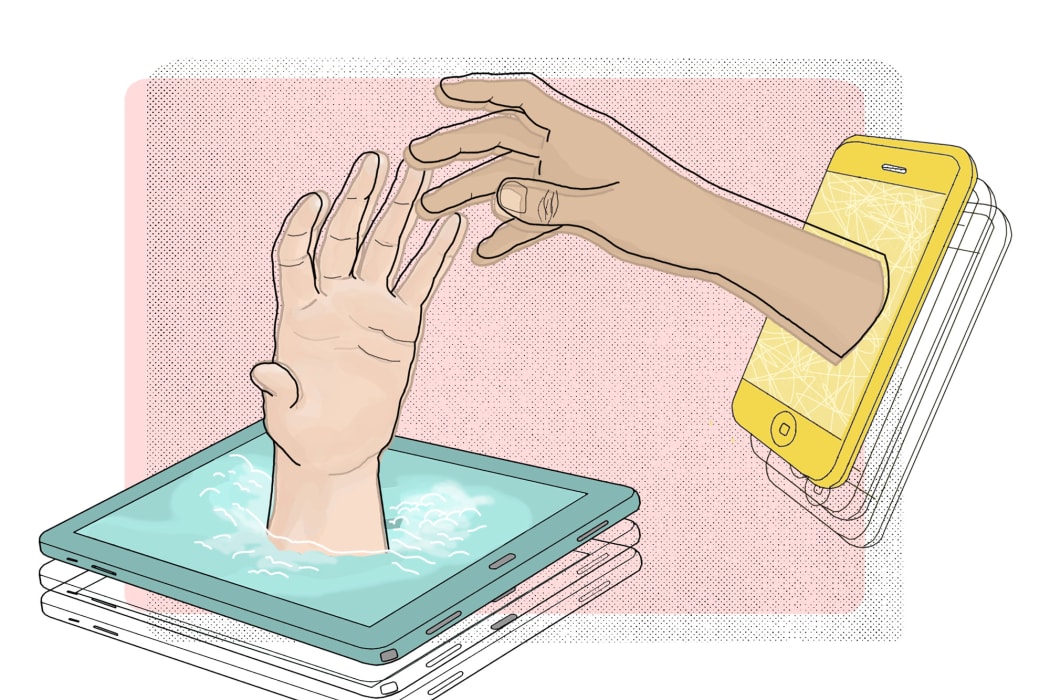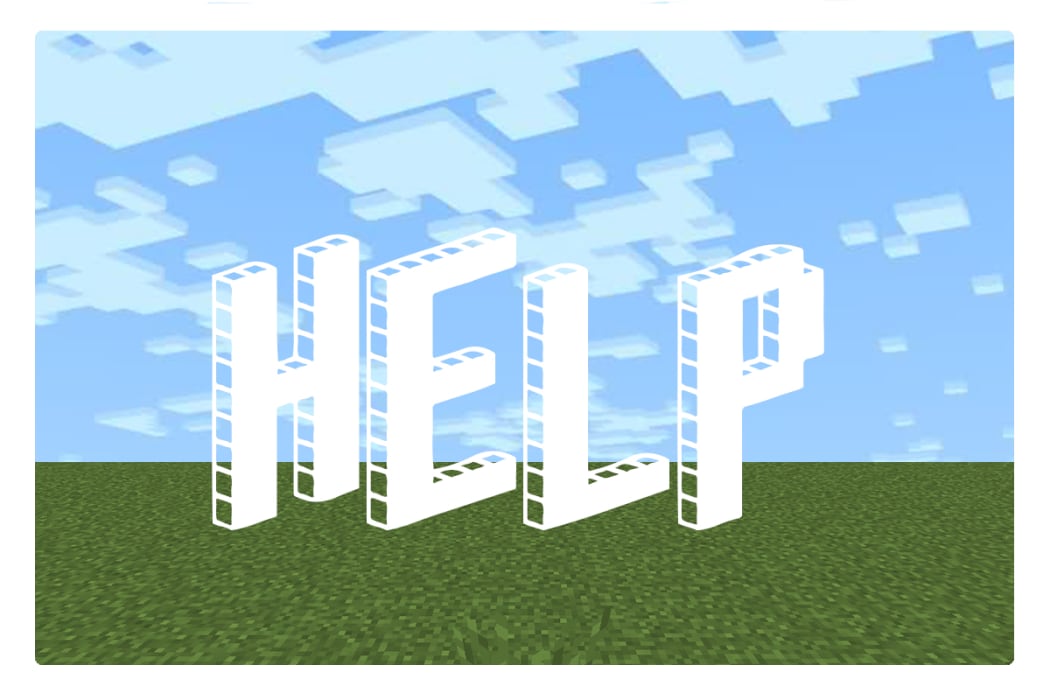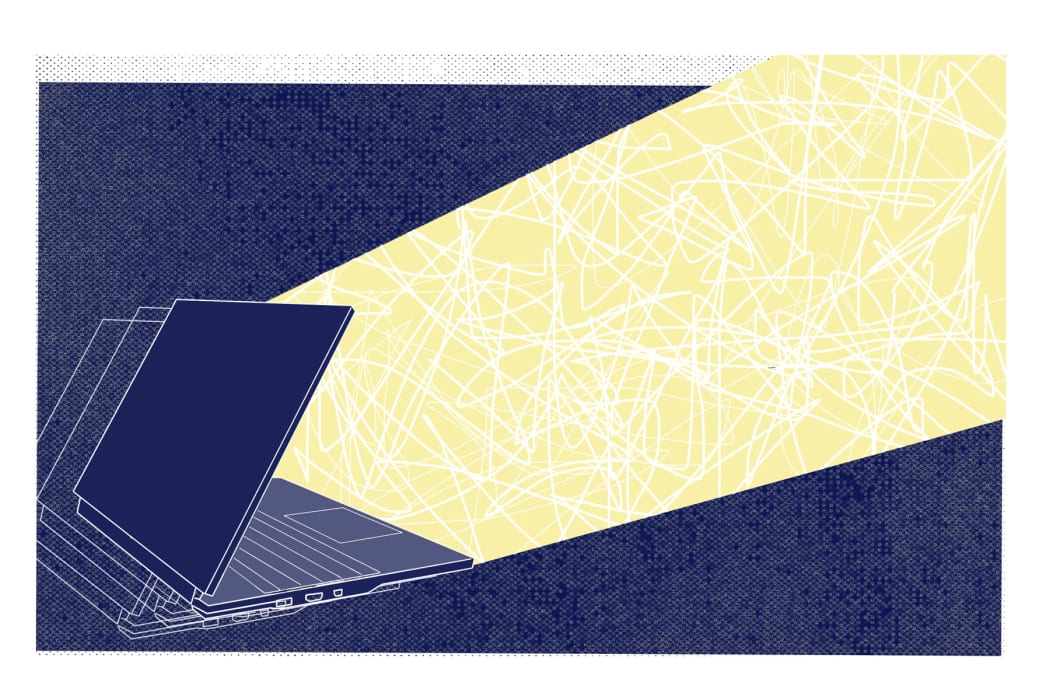Communities that care.

Photo: Illustration: Pinky Fang
I got my first laptop at 14 years old.
It wasn’t necessarily because my parents believed in giving us kids all the gadgets in the world, but I was of that generation that started high school right around the time that it was becoming expected children would “Bring Your Own Device” (BYOD). I was very privileged to be able to have this, and I know many other children around that time were doing their homework on the library computers after school, or catching up on work in the computer labs instead of eating lunch every day.
This meant that I began to have access to the internet in ways I’d never had before – nobody was checking my browser history or anything.
I was a bit of a troubled kid. I was different and I never really understood why (I now know that my entire life I’ve been neurodivergent, an umbrella term used to describe people with mental illness, ADHD or autism), so I experienced bullying at school.
I found friends and communities through a Harry Potter roleplaying forum, some through fanfiction - and then my friends discovered Tumblr and I tagged along.
My family had just moved from the suburbs of Dunedin to an edge-of-town subdivision 30 minutes from where I used to live, so I was socially isolated, and only really got to see my friends at school. I compensated for this by building new online communities for myself.
My first-ever social media account was my Twitter account, which is actually still in use today. I found friends and communities through a Harry Potter roleplaying forum, some through fanfiction - and then my friends discovered Tumblr and I tagged along.
It was like nothing I’d ever experienced before. I was one of the youngest of the Livejournal generation but I never really understood the interface. I found Tumblr frustrating but intuitive, and I really valued the ability to create different blogs with different aesthetics and communities attached to them.
Having Tumblr meant that I had somewhere to vent and find other people who had experienced the same difficulties. There are friends of mine that I still keep in touch with now who I met through the Tumblr mental illness communities.
We've saved each other’s lives by calling the authorities when it’s been necessary; we’ve donated to each other’s GoFundMes and Givealittles when our financial situations have been tight; we’ve sat through the night together on Skype for hours and hours on end when we’ve felt so dangerously low that we couldn’t handle being alone. We’ve ordered each other surprise pizza from across the world when we know the other is having a rough time. Some I’ve even met in person.
As I’ve grown older my use of social media communities has shifted, but not really changed. As an older teenager I left some of the more problematic communities – believe it or not I was once upon a time involved in the pro-anorexia, pro-self-harm communities – and the communities I’ve moved into have much more of a pro-recovery bent to them. I was once an admin on the popular Tumblr blog “Choose Recovery” until 20,000 followers to 20 admins became too overwhelming and the blog dwindled into non-activity. I am still an admin in Facebook eating disorder recovery groups, alongside four or five other friends from around the world who have personal experience of eating disorders but professional qualifications and training too. I participate in general mental illness and post-traumatic stress disorder support groups through Facebook and I have a wonderful group of close, local friends built through the mental health and chronic illness communities on Instagram. When my old joints get too sore for my young body again, and I’m stuck alone in bed for days on end, I’m kept company by “spoonie vloggers” on YouTube – people who vlog nearly daily about their lives with chronic illness or mental illness, or by my friends on Twitter who again, have saved me from the brink more times than I can count.

Photo: Illustration: Pinky Fang
The art of curating and building a community for people who just need some support is a dedicated and time-consuming one. I’ve never met anyone more dedicated than Stuart “AutismFather” Duncan, a father of two living in Ontario, Canada. One of Stuart’s kids is autistic, and through that diagnosis he learnt that he’s on the spectrum too. And when parents in his support groups began to ask, “Is there anyone my kid can play with on Minecraft so they don’t get bullied all the time?”, Stuart used his professional skills as web developer and spent a month building Autcraft, a huge server for Minecraft where autistic people can play safely together with nearly 24/7 adult supervision.
The server opened in 2013, and since then nearly 9000 players have been added to the “white list” – that is, their usernames have been checked for misbehaviour and trolling on other websites and they’ve been approved to use the server. There are usually between 10 and 50 people logged into Autcraft at once, depending on the time of day.
I spoke to Stuart about the unique community he’s crafted here, and where he would love to see the server go in future.
The community has empowered autistic children to make incredible steps.
In Autcraft, a lot of autistic kids mean a lot of upsets. In the early days, admins on the server had to spend a lot of time talking to kids and stepping in, sometimes temporarily muting them so they aren’t causing other people to get upset or overwhelmed. When Stuart saw a “Snoozelen room” in action at his son’s school, he replicated that with four “calm rooms” on the server, where a player can go to destimulate, decompress and get away from the noise of the public chat system. The server has a “jail”, for when players are breaking the rules, but Stuart and the admins don’t like calling it that – it’s a set of small, inescapable rooms with information on the walls about the rules a player might have broken, and what they should do instead. In these rooms only an admin can talk to a player.
Often, Stuart says, when a player is having a difficult time in their offline life it’ll be reflected in their behaviour in Autcraft. Stuart has had numerous children disclose abuse or bullying to him when no one offline knows what’s happening, because he’s developed such a level of trust with the players. The community has empowered autistic children to make incredible steps. The team hear from parents about non-verbal/minimally verbal children beginning to speak about Minecraft, about autistic young people who never thought they’d be able to go anywhere in life and are now living out of home and working in their dream jobs (with a reference from Stuart himself), and about parents who struggled to communicate and relate with their children who now have brilliant relationships with them because they’ve been playing together in Autcraft.

Photo: Illustration: Pinky Fang
Stuart says what he wanted the next step for the server to be, and he told me that he would love to see professional counsellors and helpline workers joining the server as “listeners” – more people for players to learn to trust and access support from.
I asked an admittedly biased subset of my followers on Twitter where people go to find community online with mental or physical illness or disability. Naturally, most people said Twitter. But several people identified how much easier they’ve found online spaces to be than group therapy – people have said there’s less pressure, you’re able to control what you see, and you’re able to leave when you need to. Equally, people have identified that these online spaces are not always moderated safely, due to the lack of training moderators have, and that better support is needed for a model that can do a lot of good.
Hello Twitter! I am working on a project.
— Scout Barbour-Evans (@scoutriver) January 8, 2018
a. If you are mentally or chronically ill, please respond to this tweet with the names/types of online platforms you have used to find community with similar experiences.
b. If you are a human with a Twitter account, pls RT.
It’s about time our health professionals work with communities to continue developing these safe online spaces for people to learn about themselves, grow as people, and find peer support that benefits our community, not harms us. What we have now is not anywhere near perfect, but it’s a model that is overdue for development. It’s not about replacing face-to-face care and it has never been – it’s about giving someone the ability to find community and whānau in those who have similar experience.
Maybe the internet isn’t so harmful after all.
OTHER PLACES TO GET HELP WITH MENTAL HEALTH
Need to talk?: free call or text 1737 to talk to a trained counsellor, anytime.
Lifeline: 0800 543 354
Suicide Crisis Helpline: 0508 828 865 / 0508 TAUTOKO
Depression Helpline: 0800 111 757
Samaritans: 0800 726 666
Youthline: 0800 376 633 or email talk@youthline.co.nz
Healthline: 0800 611 116

